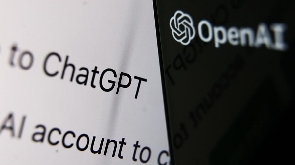Artificial Intelligence (AI) refers to the development of computer systems and machines that can perform tasks that would typically require human intelligence, such as visual perception, speech recognition, decision-making, and language translation.
AI systems can be designed to learn from data and improve their performance over time.
The concept of AI was first proposed in 1956 by a group of computer scientists who gathered at the Dartmouth Conference to discuss the possibilities of creating machines that could mimic human intelligence.
However, the idea of machines that could perform intelligent tasks dates back much further.
Right from the inception of the term AI, there have been numerous opposition against the movement with major concerns being what happens to humans if machines are programmed to think, operate and mimic humans, how would this technology affect employment, how would it influence the will of men to live and as well as the creativity of men.
These concerns however did not stop the development of artificial intelligence. In recent times, advanced countries like China, Singapore and many others employ robots in their airports, and factories to aid with dangerous activity and soft labour.
This new development raised concerns as it meant that fewer people would be employed for the work that these robots did.
The fear of job loss over the years due to the creation of artificial intelligence has intensified as a result of the development of a language-based AI known as ChatGPT-4. It is a language model of artificial Intelligence that enables man to accurately and coherently communicate with their machines, and ask them to embark on tasks such as writing codes, essays, designs, and many more.
Conversations and projections on ChatGPT-4 have been that it would lead to massive job loss.
This article shows how AI, ChatGPT-4 would only make work efficient.
Firstly, ChatGPT-4 would allow humans to delegate repetitive and time-consuming tasks to the machine, freeing up more time and resources for creative and analytical work.
This means that jobs that involve more routine tasks, such as data entry, would be automated, and workers would be able to focus on tasks that require more human input, such as critical thinking, decision-making, and problem-solving.
Secondly, ChatGPT-4 would be capable of improving communication and collaboration in the workplace. With its natural language processing capabilities, ChatGPT-4 could facilitate communication between employees who speak different languages, leading to greater cross-cultural understanding and better teamwork. Furthermore, ChatGPT-4 could help to reduce communication errors and misunderstandings, thereby improving productivity and efficiency in the workplace.
Thirdly, ChatGPT-4 would allow for the development of new and innovative products and services. By analyzing vast amounts of data, ChatGPT-4 could identify patterns and trends that humans may miss. This could lead to the creation of new products and services that better meet the needs of consumers, thereby creating new job opportunities.
Finally, ChatGPT-4 could help to reduce bias and discrimination in the workplace. With its advanced natural language processing capabilities, ChatGPT-4 could help to identify and remove bias from job descriptions, recruitment processes, and performance evaluations. This could lead to a more diverse and inclusive workplace, benefiting both employees and employers.
In conclusion, while some may fear that ChatGPT-4 would lead to mass unemployment but the reality is that it would enhance productivity, efficiency, and innovation in the workplace.
With its ability to automate routine tasks, improve communication and collaboration, generate new ideas, and reduce bias, ChatGPT-4 would make work better for everyone.
Watch the latest edition of BizTech and Biz Headlines below:
Watch the latest edition of Business Moments below:
EAN/ESA
Business News of Saturday, 18 March 2023
Source: www.ghanaweb.com
Why ChatGPT-4 would not lead to mass unemployment but would make work better
Opinions












